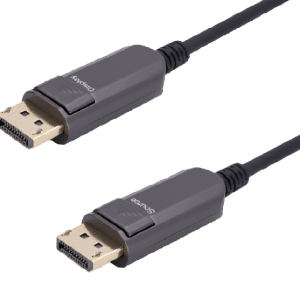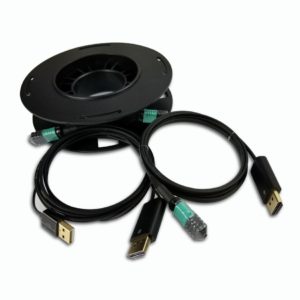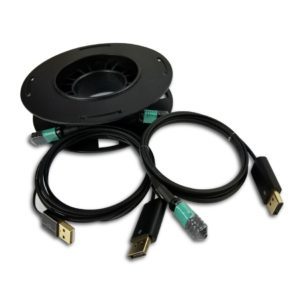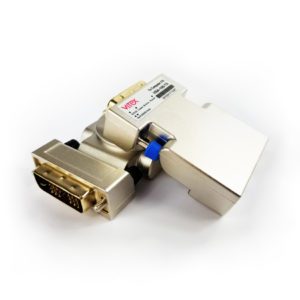The common standards for connecting a digital video source to a display (monitor, TV, etc.) are HDMI, DVI, and DisplayPort. In this article, we compare these connection standards and list their pros and cons.
HDMI
HDMI, or High-Definition Media Interface, is the standard for HDTVs and is available on most computer monitors. It carries audio as well as video signal. If your display or TV has HDMI 1.4, it can support up to 3,820×2160 (4K) resolution at the refresh rate of 30Hz. If you have a graphics card and a display with HDMI 2.0, you will then be able to get 4K at 60Hz. HDMI is designed to be backward-compatible with DVI, so there is no loss of video quality when using an HDMI-to-DVI adapter or cable.
High-speed HDMI cable is needed for resolutions above 1080p, and for most uses, high-speed cables designed for HDMI 1.4 will also work on HDMI 2.0.
HDMI 2.1, a new standard defined in 2017, will be available in commercial products in 2020. HDMI 2.1 supports the transfer rate of 48 Gb/s, compared to HDMI 2.0 (18 Gb/s) and HDMI 1.4 (10.2 Gb/s). For higher transfer rate, though, newer HDMI 2.1 cables have to be used.
DisplayPort
DisplayPort is the best choice for connecting a computer to a monitor. The older DisplayPort 1.2 is capable of 3840×2160 (4K) at 60 Hz or 1080p at 144Hz. DisplayPort 1.4 can support 4K at 120Hz, or 8K at 60Hz.
With DisplayPort 1.3 or higher, you can run two displays at 4k at 60Hz from a single DisplayPort cable. Dual-mode DisplayPort, known as DisplayPort++, can also be adapted to DVI and HDMI with a simple passive adapter.
DisplayPort can carry audio signal too. However, it is up to the manufacturer to support and implement audio over DisplayPort, so some devices may not support audio.
Learn more about DisplayPort >
DVI
DVI, or Digital Visual Interface, connection is still found on many graphics cards. The video signal is basically the same as HDMI, but DVI does not carry audio signal. Some graphic cards, however, may transmit audio signal via DVI port when connected with a DVI-to-HDMI cable or adapter. Single-link cables and hardware support up to 1920×1200 resolution while dual-link DVI supports 2560×1600. DVI is capable of 144Hz refresh rates, so it is a good choice if you have a 1080p 144Hz monitor. For 4K resolution, though, you will need to use DisplayPort or HDMI.
Contact us at info@vitextech.com if you have any questions.
Related Products





